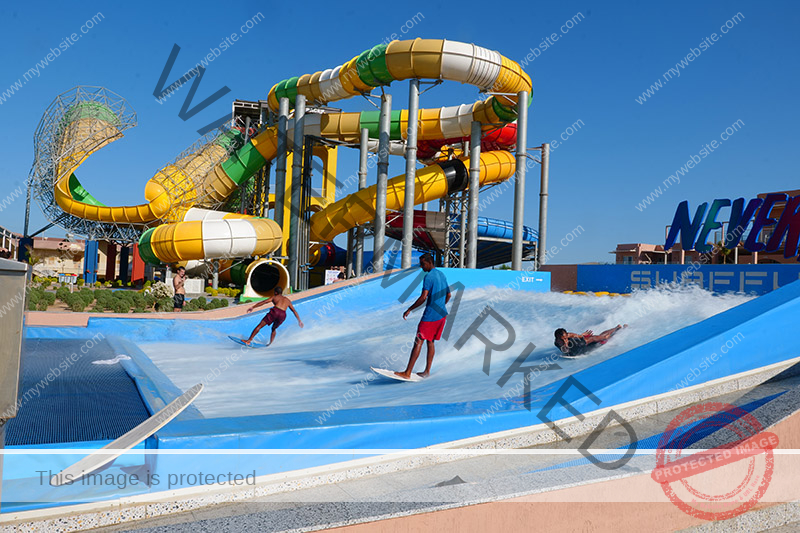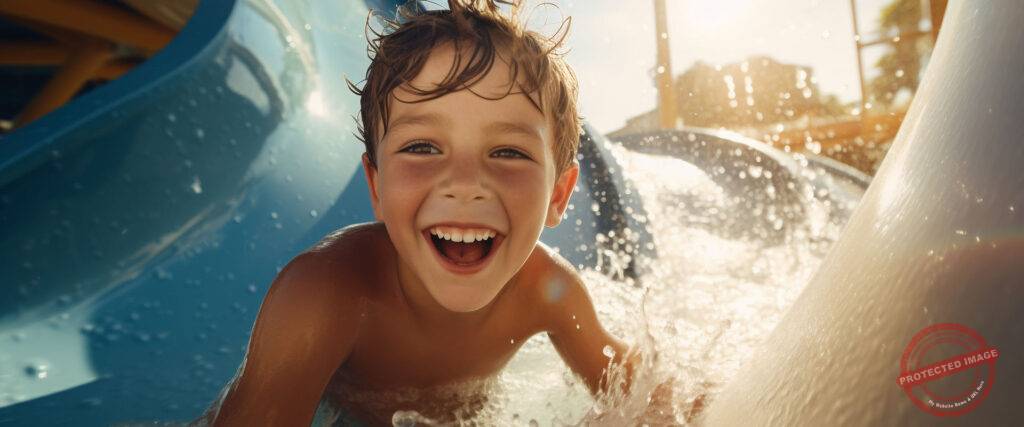Key points for safety protection design of water park slides

The safety protection design of water park slides needs to be comprehensively considered from multiple dimensions such as equipment structure, material selection, auxiliary facilities and operation management to ensure that visitors can enjoy the fun while maintaining their personal safety. The following are the specific design points:
First, the design of the main structure of the slide
Slope and curve design
The slope should be scientifically set according to the type of slide (high-speed slide/children’s slide) to avoid being too steep causing loss of control or too gentle affecting the experience.
The radius of the curve should conform to ergonomics to avoid sharp turns causing collisions and at the same time increase the fun of coasting.
Selection of slide materials
Priority should be given to using wear-resistant, weather-resistant and anti-aging materials such as glass fiber reinforced plastic (FRP) to ensure no deformation during long-term use.
The surface should be smooth without sharp protrusions to prevent scratching tourists.
Exit buffer zone
Set up deceleration facilities (such as the end of the wavy slide) and soft cushioning pads to reduce the impact force when tourists slide out.
There should be sufficient water depth at the exit (0.8-0.9 meters for adult slides and 0.3-0.6 meters for children’s slides), and an anti-slip floor should be provided.
Second, auxiliary safety facilities
Guardrails and grip handrails
Anti-slip railings with a height of no less than 1.1 meters should be set up at the entrance, exit and steps of the slide to prevent tourists from falling.
Handrails are added at the exit to help tourists stand steadily.
Water level and flow control
Install a water level monitoring system to issue real-time warnings and automatically adjust the water level to avoid the risk of drowning.
Control the water flow speed at the entrance to prevent tourists from losing control due to excessive impact force.
Emergency stop device
Emergency stop buttons should be set at key positions such as the starting point of the slide and curves to ensure that the operation can be immediately halted in case of emergencies.
Third, safety signage and guidance system
Warning sign
Prominent safety warning signs should be set up at the entrance, exit and surrounding areas of the slide, clearly stating the sliding rules (such as no standing, wearing life jackets, etc.).
Mark the height, slope, suitable population and other information of the slide to guide tourists to make reasonable choices.
Directional sign
Set up clear route guidance to prevent tourists from getting lost or being crowded and causing accidents.
Reflective signs or lighting systems should be equipped at night or in low-light conditions.
Fourth, the monitoring and rescue system
Video surveillance system
High-definition cameras are installed at the entrance, exit and key areas of the slide to monitor the movements of tourists in real time and detect abnormal behaviors promptly.
Lifeguard allocation
According to the scale of the slide and the number of tourists, professional lifeguards should be reasonably allocated to ensure full supervision throughout the process.
Lifeguards need to receive regular first aid training and master skills such as cardiopulmonary resuscitation.
Emergency rescue facilities
Be equipped with lifebuoys, rescue ropes, first aid kits and other devices, and set up clear emergency passages.
Regularly organize emergency drills to ensure the rescue process is efficient and smooth.
Fifth, daily maintenance and management
Regular inspection and maintenance
Check the integrity of the slide structure, materials and protective facilities every day, and repair worn or damaged parts in time.
Regularly clean the slide to prevent algae or debris from affecting the safety of sliding.
Water quality management
A circulating water system is adopted, equipped with filtration and disinfection devices to ensure that the water quality meets hygiene standards.
Regularly test water quality indicators (such as residual chlorine and PH value) to prevent tourists from suffering health problems due to water quality issues.
Tourist Management
Conduct safety education for tourists and emphasize the importance of abiding by the rules.
According to the load-bearing capacity of the slide, control the number of visitors to avoid overloading operation.
